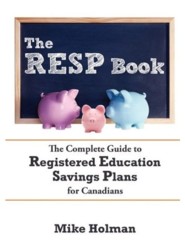My friend Christine has kindly agreed to write a series of posts on her experiences with buying a home for the first time which will be posted occasionally.
See Part 4 – What to Buy
Friends who have recently survived the house hunting experience have faced and lost bidding wars and have even come across “bully bids”. Bully bids are offers submitted early (instead of on the pre-arranged date) and way above the asking price. Thus, the search may not be an easy one and may take a while.
Part of our house search strategy involves educating ourselves about the factors which determine a house’s value. For that reason, we are also looking at properties outside our budget to look at how much more $50,000 or $100,000 buys. This exercise is also useful in considering our willingness to take on a fixer upper in a hot area. We are also considering taking on a tenant to be able to increase our budget.
So what does roughly half a million dollars buy you in Toronto? The answer is not much from what we have seen.
Open houses provide a fantastic opportunity to compare different neighbourhoods or to just scope out renovation ideas. With this in mind, we made open houses a regular part of our routine for a while. What was disconcerting is that open houses in the more popular areas tend to be very busy and attended by couples fitting our demographic. We are essentially competing with others just like us in terms of age and income – not a surprise perhaps, but a sobering realization of how many people we are up against.
Recognizing that our money would stretch farther if we left the downtown core a bit, my husband and I considered houses along Yonge Street between Eglinton and Lawrence, areas outside our dream locations but still along the subway line. In these “cheaper” areas relative to the Annex, our budget still only allows us to afford a semi-detached.
A semi at Yonge and Eglinton was well-priced at $549K, however proved tiny in its overall size and room proportions. Despite its uninteresting curb appeal, a semi at Eglinton and Mt. Pleasant listed at $619K was very intriguing with beautifully spacious rooms, 4 bathrooms and even a sauna. Its flat roof (potentially expensive and a worry with our winters) and steep staircases (rebuilding a staircase could involve costly structural alterations in the tens of thousands) ruled it out.
An elegant detached century home at Yonge and Eglinton seemed to offer good value with 3,000 square feet of living space and an asking price of $899,900. With well maintained original floors and stately wood detailing, it was still a fixer-upper with outdated kitchens and bathrooms, oil tank heating and some knob and tube wiring. It remained on the MLS for only a couple of weeks.
Some of the other listings that our agent sent were close to Avenue Road and the 401, a beautiful area, but too much of a hike from transit for non-drivers like us.
Downtown, at first glance, a detached house with its dramatically renovated interior looked promising at $649K. However, the lot size and rooms seemed small. Also, its location close to Alexandra Park, a tough public housing area was not ideal. I also couldn’t help thinking that it might be considered a better house in a less desirable area and was worried about its resale appreciation potential. Nonetheless, the house sold for $60,000 over asking after only 12 days.
An updated Annex townhouse had spacious rooms, but had only two bedrooms for a $749,000 asking price. Inexpensive tiles and finishes too traditional for our taste were also off-putting.
Thus far, I am still optimistic, but recognize that either our neighbourhoods or budget may have to change. I have been diligently checking the MLS each day, and am hoping to look at houses each weekend and during the week as they become available.
The search continues…
Read the next post in this series “Week One With an Agent” .
